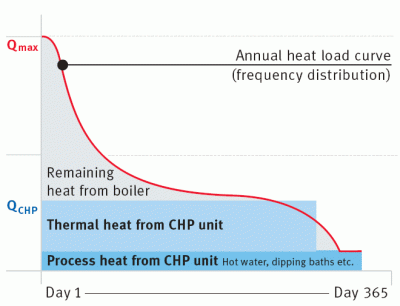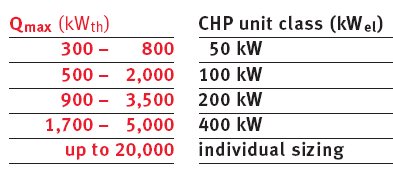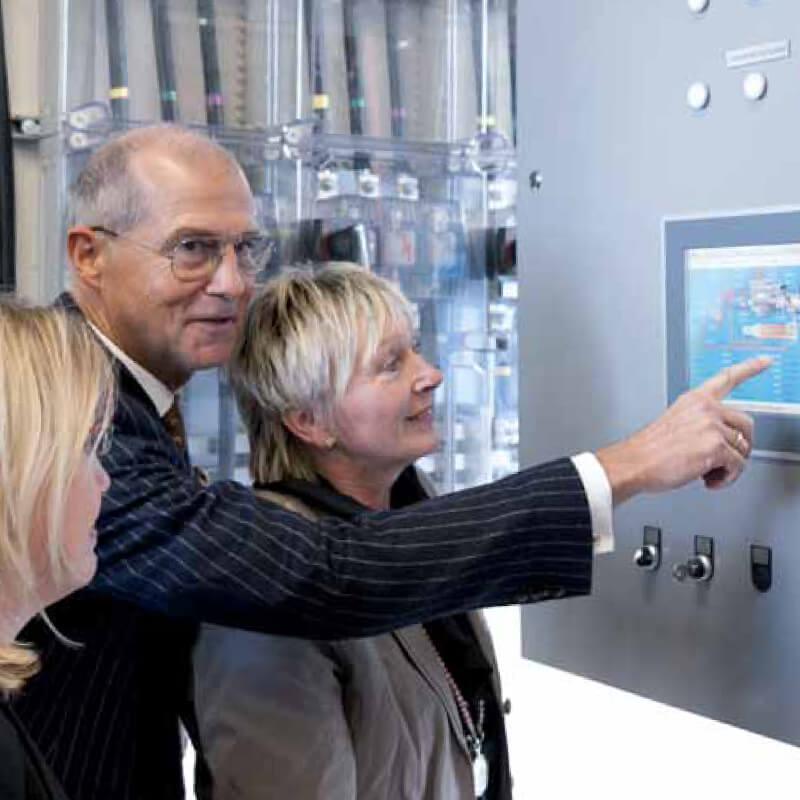 To ensure a high utilization rate over the year, CHP units are mostly sized by the heat baseload of an object (e.g. hotel). This way they cover are large part of the energy consumption, often more than half of the heat and power needed over the year. Peaks of the power demand are covered by the public mains – and peak boilers provide the heat demand not covered by the CHP unit on especially cold days.
To ensure a high utilization rate over the year, CHP units are mostly sized by the heat baseload of an object (e.g. hotel). This way they cover are large part of the energy consumption, often more than half of the heat and power needed over the year. Peaks of the power demand are covered by the public mains – and peak boilers provide the heat demand not covered by the CHP unit on especially cold days.
To define the appropriat CHP plant size the maximum heat load (Qmax) on the coldest day is used. Depending on climate zone, object type and power / gas prices, a profitable operation can be reached if the thermal power of the CHP unit (QCHP) is ca. 10 – 30% of Qmax.
In special cases, e.g. to provide emergency power for defined consumers or to fully supply objects with power in island operation, the CHP unit is sized by the electricity demand.
Multiple CHP unit schemes
With our individually configurable superordinate control MaxiManager several CHP units can be combined and controlled together with boilers and heat storages.
These multiple CHP unit schemes allow a more precise adaption to the heat demand of the object – and an energy supply with compact CHP units in the Megawatt power range. Their redundancy also increases the availability of the CHP scheme because during the maintenance works of one CHP unit the other CHP unit(s) can still operate.
 Sizing table
Sizing table
This table offers a first indication for the correct sizing. We are happy to discuss with you which size would be best for your specific CHP project. Further information can be found in our sizing principles.







